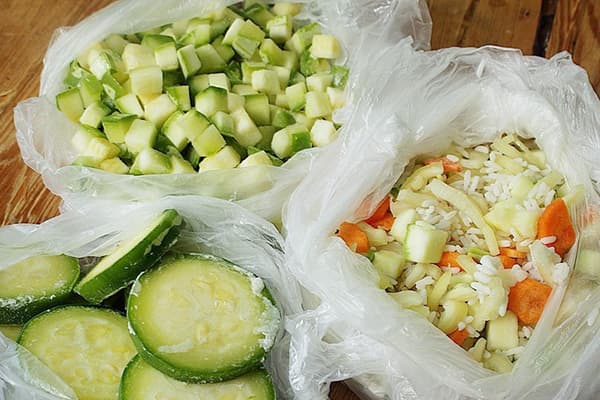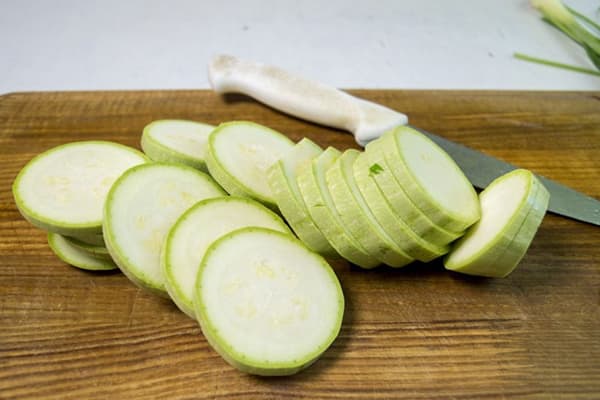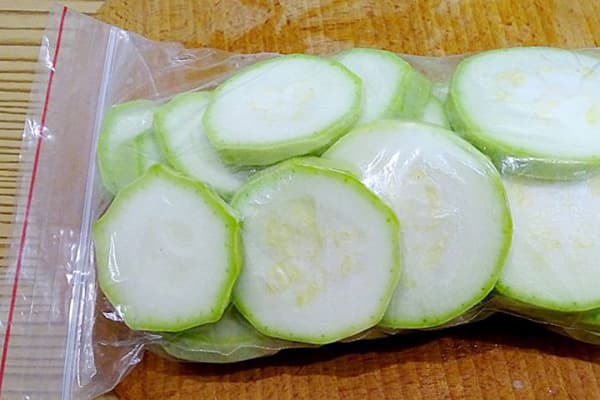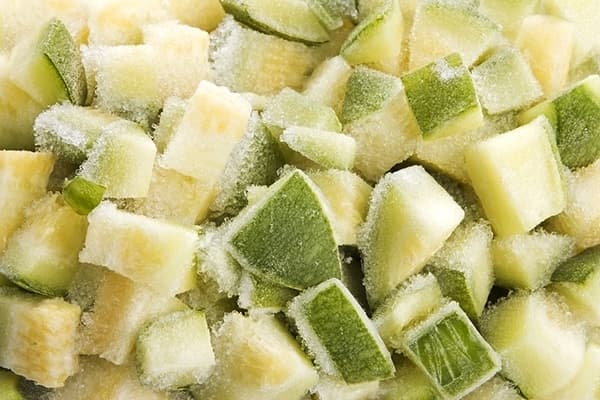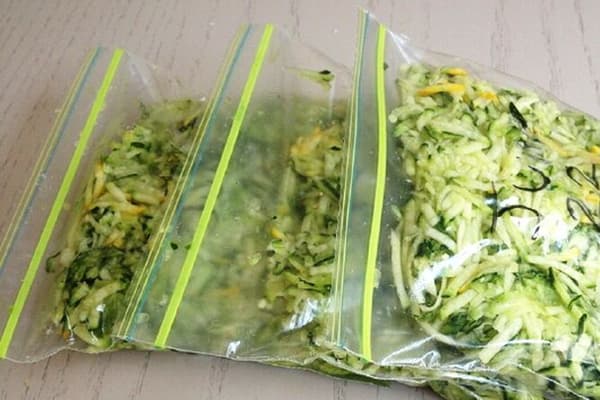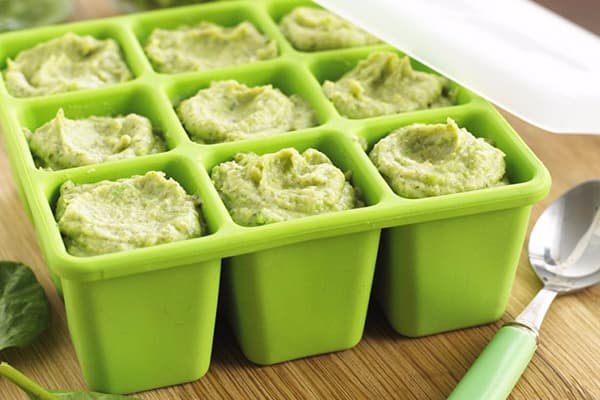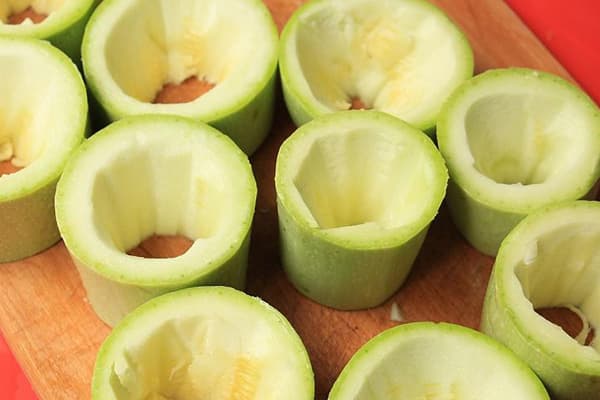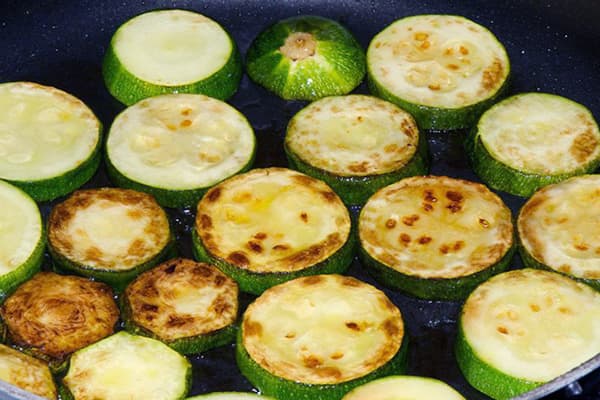How to freeze fresh zucchini for the winter in your home freezer?
Content:
Freezing is a simple and effective method of preparation, which preserves the vitamins and beneficial microelements that the body needs so much during the winter season. With the advent of freezers, there was no longer a need to preserve vegetables, berries and fruits for the winter. There are many recipes that allow you to freeze zucchini fresh in the freezer for the winter. The semi-finished product is used for the preparation of soups, stews, gravies, pancakes, and is also used as the first complementary food for a child. After all, zucchini, picked from your own garden in the summer and frozen, is much healthier than a fresh vegetable bought in the supermarket in winter.
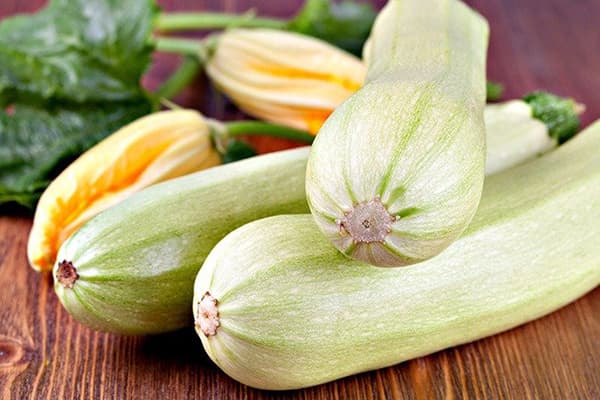
Choosing zucchini for freezing
Zucchini is a hypoallergenic product with low calorie content, which has a positive effect on the functioning of the digestive system, helps eliminate waste and toxins, while it has a pleasant delicate taste and goes well with meat, chicken, and fish.
Any zucchini is suitable for freezing: large, small, young and finally ripe. The main thing is that they are ripe and fresh, preferably just picked from the garden.
When choosing specimens for harvesting for the winter, you must remember that young vegetables contain a lot of water, while overripe ones have thick skin and large seeds that will have to be removed.
Each vegetable must be carefully examined and specimens with obvious damage to the skin or signs of rot must be set aside. This product is not suitable for freezing, especially if it is planned to be used as complementary food for a child.
What is the best way to freeze?
To store vegetables in the freezer, you can use any container that can withstand prolonged exposure to low temperatures:
- special vacuum bags;
- silicone molds;
- food plastic containers for 250 ml or 500 ml.
Containers and bags must be clean and dry. You should try to squeeze out all the excess air from the bag.
Glassware and very thin bags should not be used as containers for freezing at home. Glass can crack, and the thinnest polyethylene becomes brittle after freezing and falls apart.
It is worth sticking a label on the container or bag indicating the name of the vegetable, method of preparation and date. After lying in the freezer for several months, preparations of vegetables of the same color become similar to each other, so without the inscription it is difficult to distinguish where the zucchini is fried and where it is blanched.
Preparation for storage
Before freezing zucchini, they must be properly prepared:
- cut from both ends, removing the place where the flower grows and the stalk;
- rinse in cool water;
- dry with a paper towel or cotton napkin.
When freezing young zucchini, it is not necessary to cut off the skin.Overripe fruits must be peeled and the seeds removed along with the adjacent pulp.
The zucchini prepared in this way is cut depending on the chosen freezing method: into cubes, cubes or rings, crushed using a grater or blender.
Freezing in rings
Zucchini, frozen in the form of rings or plates, is perfect for making casseroles and hot sandwiches. They can be fried in batter and served with herbs as a separate dish.
Many housewives prefer to blanch vegetables for 3-5 minutes in boiling water before freezing. Thanks to this treatment, the fruit better retains its color and taste after defrosting. However, experts say that it is not necessary to blanch, and fresh vegetables that have not been subjected to heat treatment contain more nutrients. The choice of method depends on personal preferences and tastes.
Recipe for freezing zucchini slices:
- young vegetables with their skins are cut into rings about 5 mm thick;
- Pour clean water into a deep saucepan and bring to a boil;
- the slices are immersed in boiling water for 3–5 minutes;
- Place the zucchini slices in a colander to drain excess liquid;
- dry by laying it on a kitchen towel;
- freeze the rings, laying them out in one layer on a plate or tray so they don’t stick together;
- put the workpiece into portioned bags and store it in the freezer.
If you don’t want to blanch, you need to sprinkle the cut fruits with salt and after a few minutes remove the excess liquid with a towel, then put them in freezer bags. In winter, it is not necessary to defrost such rings before preparing a dish.
Zucchini cubes
Freezing in the form of cubes or bars is useful for preparing vegetable soup or puree, casseroles, sautés, stews and other healthy dishes. This preparation is done as follows:
- Vegetables are freed from skins and large seeds.
- Cut into cubes and place in a bowl.
- Sprinkle the slices with a small amount of salt and leave for half an hour until the juice comes out.
- After this, the cubes are dried with a cotton napkin, placed in vacuum bags and placed in the freezer.
Grated zucchini for pancakes
An excellent preparation for making vegetable pancakes, cream soup or caviar is zucchini, chopped using a grater or food processor. In this case, it is even better to take a mature thick zucchini, since its pulp contains less juice and more fiber compared to a young vegetable.
- The zucchini is peeled and seeded, leaving only clean pulp.
- The prepared pieces are chopped using a grater or passed through a food processor with a special attachment.
- Place the resulting mass in a saucepan and squeeze thoroughly to drain the released liquid.
- Place in portions into bags.
You can add grated carrots, garlic, and chopped herbs to the zucchini. Before use, the mass is defrosted, excess water is drained again, and only then the ingredients necessary to prepare the intended dish are added.
Zucchini puree for the winter
This freezing method will certainly appeal to young mothers who want to please their baby with healthy and tasty vegetables in winter.
- The zucchini, peeled and seeded, is cut into small cubes and boiled until half cooked.
- Place the cooked vegetables in a colander, allowing excess water to drain.
- After this, grind with a blender to a puree consistency.
- The resulting mass is poured into small containers and sent to the freezer.
This type of freezing can be stored in the form of ice cubes in a food bag. To do this, instead of a container, take a silicone cookie mold, fill it with zucchini mass and place it in the freezer. As soon as the puree freezes thoroughly, the resulting ice cakes are shaken out of the mold and then stored in a bag.
Zucchini for stuffing
Zucchini stuffed with meat or vegetables under a crispy cheese crust - what could be tastier, especially in winter? Large mature specimens are suitable for this preparation.
The recipe for freezing is very simple:
- Zucchini is cut into rings about 2.5–3 cm thick, in the shape of boats or cups - the main thing is that the shape is suitable for filling with minced meat.
- The seeds and adjacent pulp are removed from each piece.
- Freeze for two hours, laid out on a tray or flat plate.
- Frozen pieces are placed in bags (one bag at a time).
In winter, all you have to do is take out the workpiece, defrost it a little, stuff it with minced meat and bake it in the oven.
Fried zucchini for the winter
For those who want to always have something on hand for quick cooking, this recipe for freezing fried zucchini is suitable:
- Young zucchini is cut into rings.
- The pieces are sprinkled with salt and pepper and rolled in flour or breadcrumbs.
- Fry on both sides in vegetable oil.
- Place the fried rings on a napkin or baking paper to remove excess fat.
- Before placing in a container, the rings are frozen individually, laid out on a tray. Otherwise, the whole freeze will stick together.
The fried rings are stored in a plastic container.It is advisable to separate the layers from each other using polyethylene, foil or baking paper.
It turns out to be an almost ready-made dish. Before use, the frozen food is removed from the chamber, laid out on a plate and heated in the microwave.
It is important to remember that vegetables cannot be re-frozen, and thawed ones should be used within 24 hours. If a quality product is selected for freezing and the basic rules are followed, zucchini can be stored in the freezer until the next harvest.
